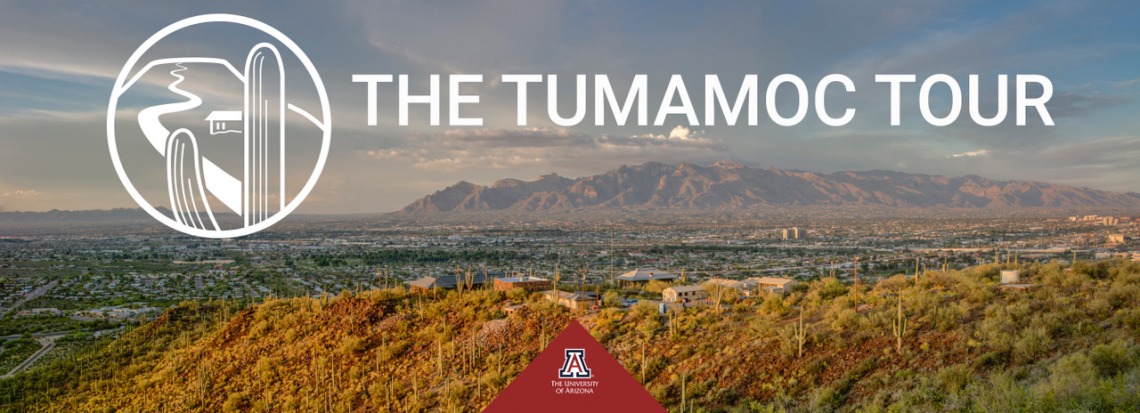App Gives New Perspective to Walk Up Tumamoc Hill

Do you know why there is a boathouse in the middle of the desert on Tumamoc Hill, or why ants are commonly found near barrel cacti? Can you identify Tumamoc's namesake plant or explain the historical significance of the rock fence that circles the mesa at the top?
If you answered no, you're not alone. Thousands of visitors walk Tumamoc's paved path each year, but few are aware of the ecological and archaeological value of the site. The University of Arizona’s College of Science hopes to change that with a new mobile app.
"So many people already love Tumamoc Hill but are not aware of its historical significance. This tour will expand people's sense of what a special place this is," said Benjamin Wilder, interim director of Tumamoc Hill, an 860-acre ecological reserve and U.S. National Historic Landmark owned and operated by the UA in partnership with Pima County.
The Tumamoc Tour is a free app that tells the story of the Sonoran Desert through the lens of Tumamoc Hill, which is located immediately west of "A" Mountain and downtown Tucson. Available for iOS and Android devices in both English and Spanish, Tumamoc Tour features six audio sections and 16 videos that provide users with interesting and informative facts about Tumamoc Hill.
"Our goal is to enhance the walker experience and give visitors to Tumamoc a greater understanding of the significance of this ecological reserve and the natural, historical and archaeological wonders of southern Arizona," said Joaquin Ruiz, dean of the UA College of Science. "This app was conceived last fall and is modeled after the Mount Lemmon Science Tour, which has exceeded our expectations with more than 150,000 downloads."
Similar to the Mount Lemmon Science Tour, which is timed to coincide with a drive up the mountain, Tumamoc Tour's audio sections are timed to an average walking pace as people stroll Tumamoc Hill's popular path.
"The narrative sections are designed for it to be a walk up and down the hill. The six different audio sections correspond to six different sections of road," Wilder said. "There is a lot of content to absorb, so I can imagine people who walk the hill daily or weekly might listen to one section one week and one the next."
Through the app, Tumamoc visitors can hear about the native people who lived in a village at the top of the hill 2,500 years ago, and about the oldest communal architecture findings in North America. Engaging stories explain why Tumamoc is considered the birthplace of modern ecology and how scientists have maintained the same research plots for more than 100 years.
A unique feature of Tumamoc Tour is its extensive library of video content. YouTube videos illustrate Tumamoc's best stories, such as the history of the Desert Laboratory buildings, located halfway up the hill, and the shrine at the base. Other videos introduce the plants, such as desert annuals and invasive buffelgrass, and animals, such as mule deer and rattlesnakes, that can be seen on the hill.
"The additional content is extensive," Wilder said. "We've embedded Google maps into the app, so you can see where you are — your GPS icon. Then, the video features are geographically located in different parts of the hill and available as icons that you can select from the map."
Like the audio clips, each video is available in both English and Spanish. David Yetman, host of the long-running PBS series "The Desert Speaks" and "In the Americas," narrated the English version of the Tumamoc Tour, while the Spanish version was narrated by Alberto Burquez of the Institute of Ecology at the Universidad Nacional Autónoma de México. The musical soundtracks were recorded by Tucson artists Calexico and Gabriel Naim Amor.
"Tumamoc Hill is a remarkable community gathering place and represents the best of our city. We will continue to welcome the public and help connect people to the wonders and history of this site and the Sonoran Desert," Wilder said. "This is an opportunity to lift up the curtains of science and bring the public into a working research facility."
The UA officially purchased Tumamoc in 1956 and continues its focus on research, education and preservation. For more information, including hours of operation and upcoming events, visit tumamoc.arizona.edu/.

